
Henry Jaynes Fonda was an American actor whose career spanned five decades on Broadway and in Hollywood. On screen and stage, he often portrayed characters that embodied an everyman image.

Lenfilm is a Russian production company with its own film studio located in Saint Petersburg. It is a corporation with its stakes shared between private owners and several private film studios which operate on the premises. Since October 2012, the Chairman of the board of directors is Fyodor Bondarchuk.

The Blue Bird is a 1908 play by Belgian playwright and poet Maurice Maeterlinck. It premiered on 30 September 1908 at Konstantin Stanislavski's Moscow Art Theatre, and was presented on Broadway in 1910. The play has been adapted for several films and a TV series. The French composer Albert Wolff wrote an opera based on Maeterlinck's original play, and Maeterlinck's inamorata Georgette Leblanc produced a novelization.
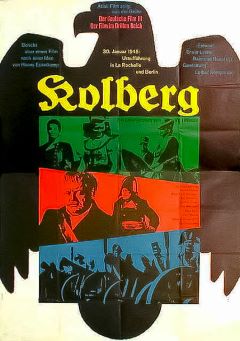
Kolberg is a 1945 Nazi propaganda historical film written and directed by Veit Harlan. One of the last films of the Third Reich, it was intended to bolster the will of the German population to resist the Allies.
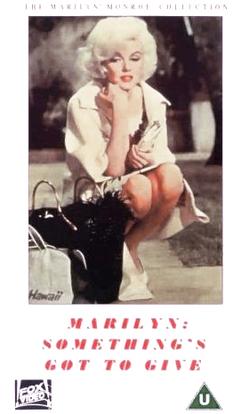
Something's Got to Give is an unfinished American feature film shot in 1962, directed by George Cukor for 20th Century Fox and starring Marilyn Monroe, Dean Martin and Cyd Charisse. A remake of My Favorite Wife (1940), a screwball comedy starring Irene Dunne and Cary Grant, it was Monroe's last work, but from the beginning of its production it was disrupted by her personal troubles, and after her death on August 4, 1962, the film was abandoned. Most of its completed footage remained unseen for many years.
A bluebird is one of several species in the songbird genus Sialia.
Aleksei Yakovlevich Kapler was a prominent Ukrainian filmmaker, screenwriter, actor, and writer. He was known as screenwriter of many Soviet movies, such as Lenin in 1918, Amphibian Man, The Blue Bird and Striped Trip, as well as one of the anchors and directors of TV program Kinopanorama. In 1941, Kapler was awarded the Stalin Prize.
The Blue Bird is a 1910 silent film, based on the 1908 play by Maurice Maeterlinck and starring Pauline Gilmer as Mytyl and Olive Walter as Tytyl. It was filmed in England.

The Blue Bird is a 1918 American silent fantasy film based upon the 1908 play by Maurice Maeterlinck and directed by Maurice Tourneur in the United States, under the auspices of producer Adolph Zukor. In 2004, this film was deemed "culturally, historically, or aesthetically significant" by the United States Library of Congress and selected for preservation in its National Film Registry.
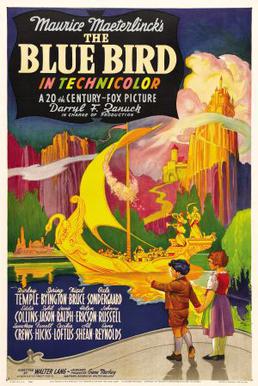
The Blue Bird is a 1940 American fantasy film directed by Walter Lang. The screenplay by Walter Bullock was adapted from the 1908 play of the same name by Maurice Maeterlinck. Intended as 20th Century Fox's answer to MGM's The Wizard of Oz, which had been released the previous year, it was filmed in Technicolor and tells the story of a disagreeable young girl and her search for happiness.
The Blue Bird is a 1970 Soviet animated feature film based upon the 1908 play by Maurice Maeterlinck. It was directed by Vasily Livanov and made at the Soyuzmultfilm studio.
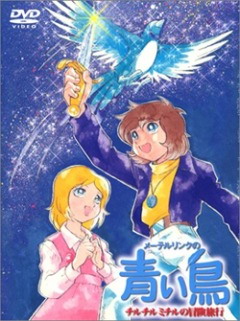
Maeterlinck's Blue Bird: Tyltyl and Mytyl's Adventurous Journey is a 1980 Japanese animated television series directed by Hiroshi Sasagawa, with character designs from Leiji Matsumoto. It is based on the 1908 play by Maurice Maeterlinck. The series was 26-episodes long when aired on Japanese television. The series was made in Japan between 1978 and 1979.
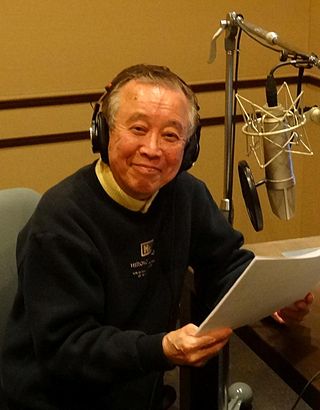
Hiroshi Ōtake was a Japanese actor and voice actor, represented by 81 Produce. He was best known for his roles as Nyarome in Mōretsu Atarō, Daisho in Himitsu no Akko-chan, Boss in Mazinger Z, Pāman 2 (Booby) in Pāman, King Nikochan in Dr. Slump, and Buta Gorilla in Kiteretsu Daihyakka. Ōtake died at the age of 90 on August 1, 2022, due to acute heart failure.
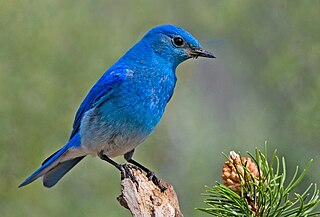
The symbol of a bluebird as the harbinger of happiness is found in many cultures and may date back thousands of years.
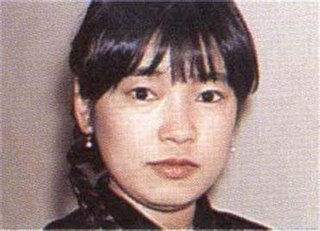
Tomiko Suzuki was a Japanese voice actress who was born in Aichi Prefecture and was affiliated with Aoni Production at the time of her death. Suzuki's last film was Pokémon: Jirachi Wishmaker, released only a week and half after Suzuki's death from a heart attack on July 7, 2003, at the age of 47.
Hiroshi Sasagawa is a Japanese creator of several anime and manga series. His name is romanized in some sources as Hiroshi Sasakawa.

L'oiseau bleu is an opera in four acts by the French composer and conductor Albert Wolff. The libretto by Maurice Maeterlinck is based on his 1908 play of the same name. Boris Anisfeld designed the sets.
Yoshinobu Nishizaki was a Japanese film producer best known as one of the two co-creators of the anime series Space Battleship Yamato. He was sometimes credited as Yoshinori Nishizaki. He was born in 1934 and graduated from the Nihon University Art Department. He also founded the studio Academy Productions which produced the 1980 anime series; Space Emperor God Sigma for Toei Company.
Mari Okamoto is a Japanese actress and voice actress.

Edward Bernard Collins was an American actor, comedian and singer. He is best remembered for voicing Dopey in Disney's Snow White and the Seven Dwarfs (1937) and for portraying Tylo in the Shirley Temple film The Blue Bird (1940).













